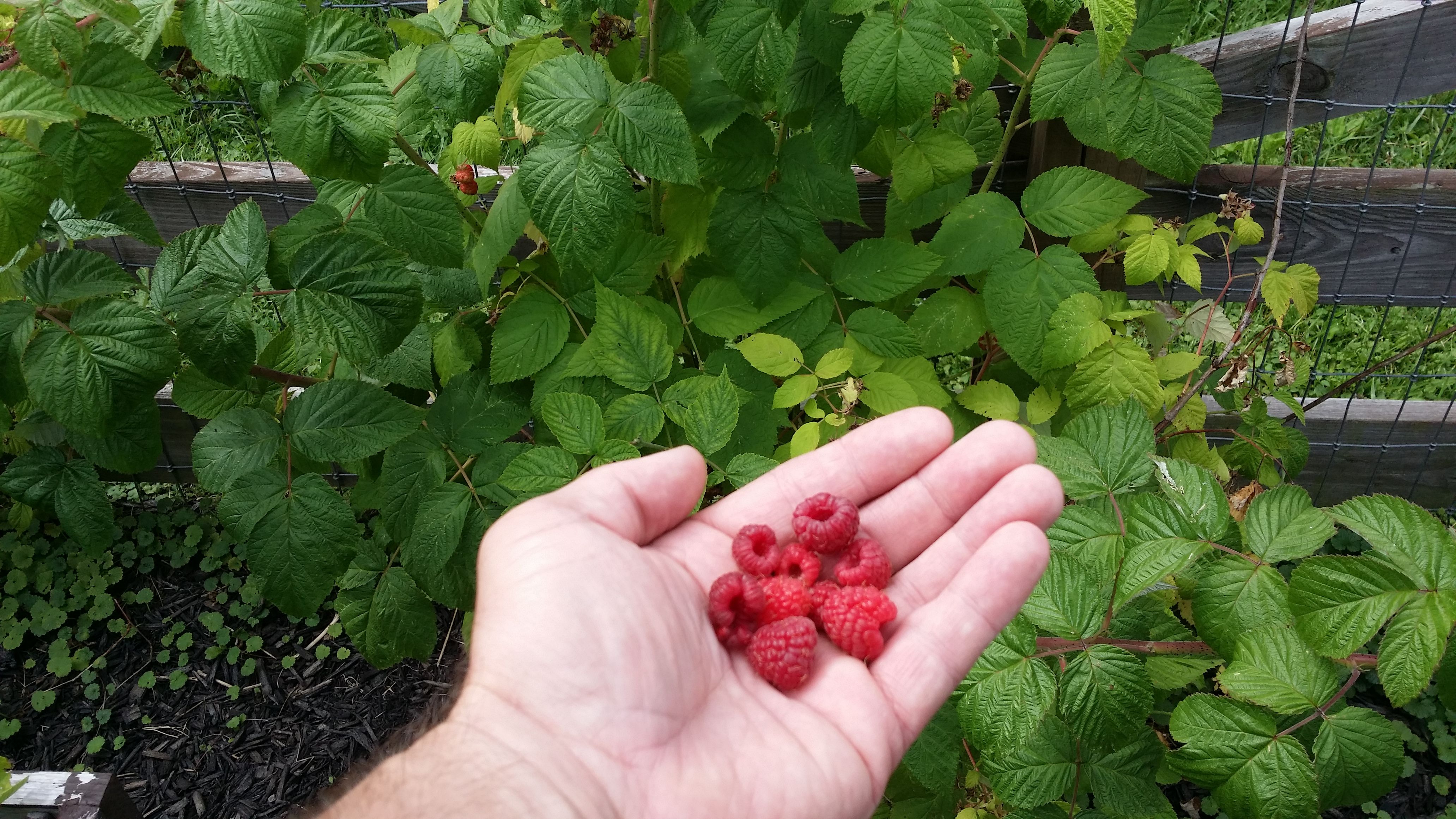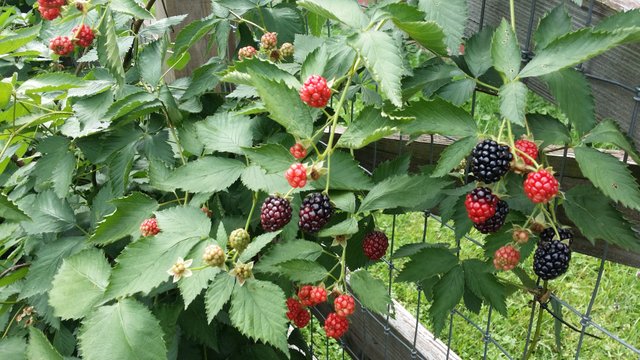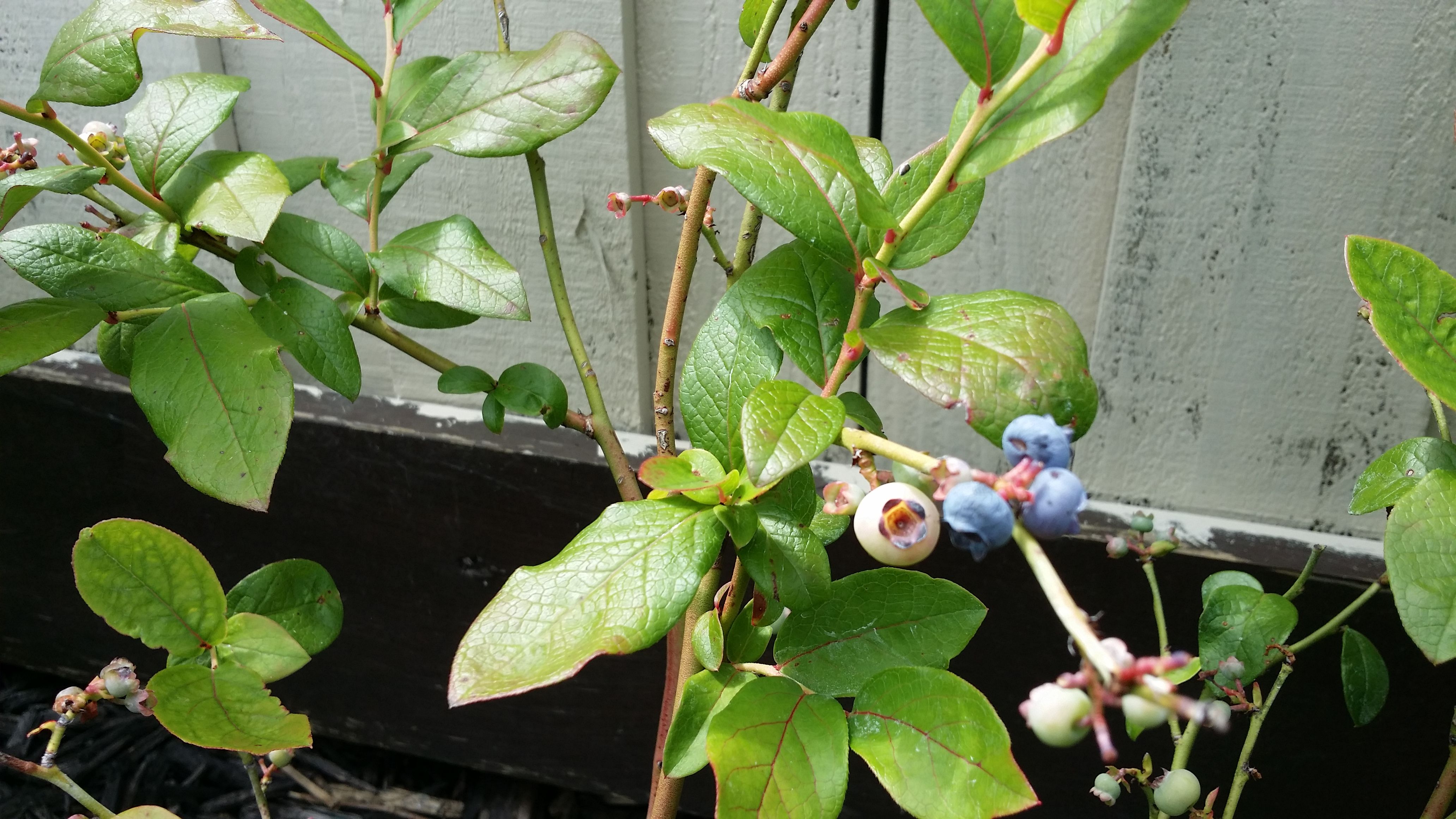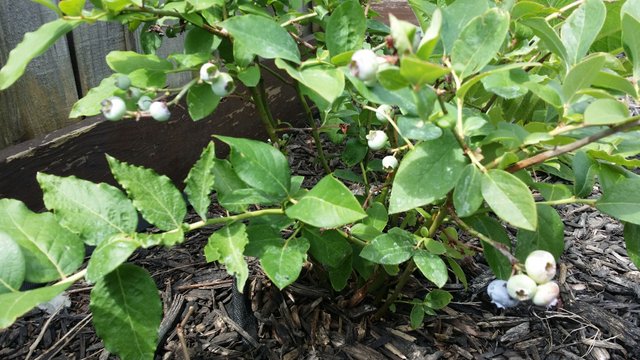All The Goodness Of Nature's Candy

When I'm working out in the garden I like to keep myself energized with regular doses of berries. :)

Raspberries, blackberries and blueberries are just a few of the little snacks in my garden.

All kidding aside they really are a great thing to grow on your homestead.

A gift that keeps on giving.
Benefits of:
Perennials don’t need to be replanted every year, so the energy intensive and equally energy inefficient seasonal task of ploughing, digging and sowing seed that is carried out for annual crops is no longer a concern. Another benefit to perennials are there deep roots and a slow growth habit means that less fertilizer and water are required to grow perennial plants, and they are on the whole a lot more productive than annuals. Growing perennial food plants is far more sustainable and energy efficient, and requires much less work overall.
Multiply through runners, offsets and cuttings.
Raspberries, blackberries, elderberries can easily be multiplied through their runners. Many of the other bush berries can be multiplied in different ways such as through offsets, which are little plants that grow up around the mother plant, or through cuttings which are made just below the leaf node where last year’s growth ends and this year’s growth begins. These are great methods for continually expanding your garden in an affordable way.
Health Benefits of Berries.
Anthocyanins: This is what provides berries with their wonderful color and serves many benefits for the plant. While folk medicine has always seen this as a vital benefit for many ailments careful study in the more mainstream medical community has also begun to see the health benefits of anthocyanins with links to cardiovascular health, cancer prevention and treatment and benefits to cognitive function.
http://www.todaysdietitian.com/newarchives/030314p20.shtml
http://www.lifeextension.com/magazine/2013/7/uncovering-the-broad-spectrum-protection-of-anthocyanins/page-01
http://www.donnieyance.com/the-many-health-benefits-of-anthocyanins/
http://www.pbrc.edu/training-and-education/pdf/pns/pns_anthocyanins.pdf
Quercetin: This powerful flavonoid has a wide range of potential health benefits, some of which include its ability to reduce inflammation, eliminate pain, protect against cardiovascular diseases, lower blood pressure, manage diabetes, prevent certain cancers, boost the immune system, and reduce irritation of the skin.
http://www.lifeextension.com/magazine/2012/9/Quercetin-Broad-Spectrum-Protection/Page-01
http://www.betternutrition.com/quercetin-energy-allergies-antioxidant/
https://www.organicfacts.net/health-benefits/other/quercetin.html
Vitamin C: Most of us know about the benefits of vitamin c and berries are loaded with this antioxidant. This vitamin contributes to the health of collagen, which helps maintain cartilage stores and aids in joint flexibility and may reduce the risk of arthritis, cataracts, and macular degeneration.
Fiber: Fiber of course helps to normalize bowel movements by bulking up stools and making them easier to pass. This can help relieve and prevent both constipation and diarrhea. Eating plenty of fiber can also reduce your risk for diverticulitis, hemorrhoids, gallstones, kidney stones, and provide some relief for irritable bowel syndrome. Fiber can also help fight against heart disease, type 2 diabetes and even some research suggests it can even help prevent colorectal cancer.
Where to grow bush fruits.
Use them for decorative landscapes.
Bush fruit can be used just like other decorative shrubs in that you can use them to build a beautiful edible landscape on your property. They can be planted in places around a porch or along a flower bed or just about anywhere where you might need a little something extra in the yard.
Grow a food hedge or “fedge” as they are commonly known.
Use bush fruit shrubbery grown closely together in a row along property lines or other areas of your property you might want to divide or separate to grow a hedge of edible goodness. This can also serve as a privacy hedge if you grow some of the taller varieties and can work much like a fence when grown close enough together.
Grow along fence rows.
long areas of fence can work much like a trellis to grow your vining varieties of berries. This can add beauty to your fence row as well as the vines intertwine and fill in the fence creating a wonderful addition to just about any homestead. This a really good way to add a lot of food to a property that doesn’t have a lot of growing space as you essentially double up on the use of one area.
Utilize spots with less sunlight.
Some varieties of berries blackberries and gooseberries will grow in relatively low sunlight making it possible for you to make better use of those shadier areas of your property where other things might not be very productive. Just do a little homework to find out what will work best, while many will grow in shady areas it may make a difference in the amount of fruit they produce and can even have an effect on the taste of the berries.
What to grow.
Grow what you like to eat.
I get asked this question all the time when it comes to growing food. People ask me “What should I grow?” and my first response is “I don’t know, what do you like to eat?” My advice would be to not put a lot of effort into something your not going to like to eat but make sure your sure, what I mean by that is make sure that just because you may not like the taste of a certain berry right off the vine doesn’t mean you won’t like the the taste of it prepared some other way like in a jam or cooked in a pie. So try some of the potential things you might want to grow in different ways to be sure what you like and may want to grow.
Grow what will naturally grow best.
Many bush fruits can be grown just about anywhere but no doubt some grow better in some places, so consider what might grow best in your area or your particular soil and light conditions. Finding out what grows naturally in your area might be a good way to select what you want to grow because these types are obviously suited best for your zone but on the flip side of that coin because they grow naturally those berries may be easier to forage for while you make use of growing less common varieties on your property.
What can you do with all those berries?
One thing is for sure, once you fill a homestead up with an abundance of bushes producing berries you will have to have an idea of what you are going to do with all of them. So here are just a few ideas although there really is no end to the creativity of using berries in the kitchen.
Jams and Jellies- What a great way to preserve the goodness of your berries year round and enjoy them anytime. Jellies and jams are easy to make and recipes abound on the internet so just do a search for how to preserve the berries you grow in a jelly or jam and find a recipe that looks good to you and get started.
Pies- Get in touch with your inner baker and take those berries and make a pie. Many berries can be used in this way although some are more suited for the task and taste better. We always like to freeze a lot of our berries so we can make pies throughout the year and prolong the joys of this option.
Dry them for healthy snacks- One of the simplest and most healthy things you can do, and in my opinion one of the tastiest, is to dry your berries. If you have a dehydrator this is super easy but even if you don’t have a dehydrator because of the sugar and acid content of most berries they can be safely sun dried outdoors. Here is a link to more about the process of sun drying berries – http://nchfp.uga.edu/how/dry/sun.html
Fruit Juices- Making fruit juice is not complicated and you can even make it in a consentrate and freeze it to preserve it and enjoy it anytime. Making juice is one of the best ways to get the benefits of the antioxidants of most berries and really harness the flavor of nature’s candy. Here is a good article on how to get started making juice – http://www.motherearthnews.com/real-food/how-to-make-fresh-fruit-juice-from-berries-recipe.aspx
Wine- This seems to be one of the nearly forgotten ways to benefit from berries and one of the best ways to preserve the goodness. This is not nearly as complicated as it might seem , making wine is a simple process of of turning sugar and yeast into alcohol. I won’t get into the details of the process but I just want to put it out there as one of the great options to make use of your berries. There are plenty of how to articles out there on the process that can be found with a simple search, so give it a go. I don’t think you’ll regret it.
We love berries! We have planted some and have many wild blackberries and dewberries on our property! Upvoted and resteemed to share all that great information you provided!
Thanks @wholesomeroots. I've never had dewberries before but we have a lot of wild blackberry and raspberry around here.
delicious!
So much Yum! Thank you for sharing so much great info🍓. Happy Wednesday to you!
yes, so much yum indeed. Thanks for commenting and have a great day as well.